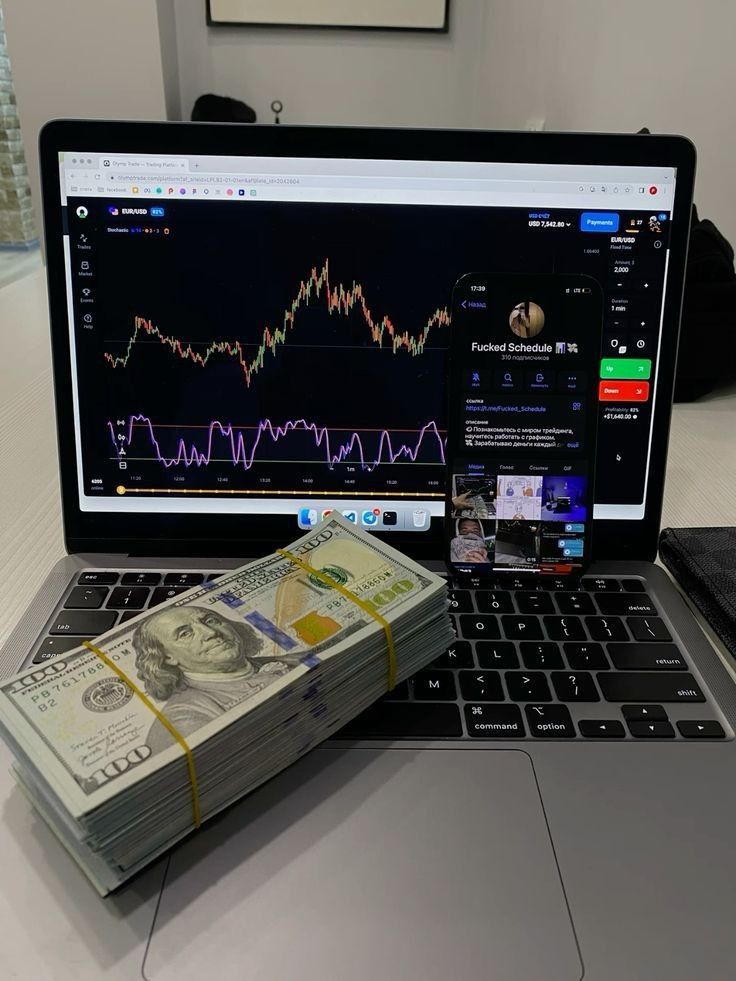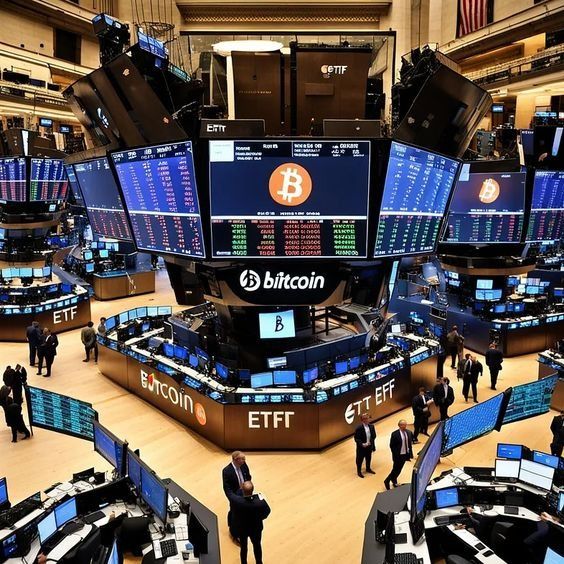The worlds of cryptocurrency and forex trading in the United States are undergoing significant changes as regulators, investors, and companies navigate an ever-evolving financial landscape.

Both sectors have seen rapid growth and increasing interest, but they are also facing scrutiny and new regulations aimed at providing clarity and safety. In this article, we’ll dive into the current state of crypto and forex in the USA, looking at recent news, regulatory changes, and future trends.
The Crypto Market in the USA: Growing Pains and Regulatory Overhaul
The cryptocurrency market in the United States has been a subject of intense debate, with both excitement over its potential and concern over its risks. The popularity of cryptocurrencies such as Bitcoin, Ethereum, and newer tokens like Solana and Dogecoin has spurred mass interest from retail and institutional investors. However, the regulatory environment has remained unclear for years, with multiple agencies claiming jurisdiction over the sector.

1. Regulatory Ambiguity and Upcoming Clarity
The SEC, CFTC, and FinCEN all play roles in regulating different aspects of the crypto industry, but their jurisdictional overlap has created confusion. The SEC has claimed that many cryptocurrencies are securities and should be regulated as such, while the CFTC considers certain digital assets commodities, subject to their oversight. The lack of a clear framework has led to friction between the industry and regulators.
In 2023, there were signs of a shift in regulatory approaches, with several agencies signaling a move toward creating clearer guidelines for crypto trading, especially in the wake of high-profile incidents like the collapse of FTX. The SEC’s crackdown on firms offering unregistered securities has intensified, while the CFTC has proposed new rules aimed at providing more oversight for decentralized finance (DeFi) platforms.
2. SEC vs. Ripple: A Landmark Case
One of the most talked-about regulatory issues in 2023 was the ongoing legal battle between the SEC and Ripple Labs, the company behind the XRP cryptocurrency. The SEC sued Ripple in 2020, alleging that XRP was an unregistered security. The outcome of the case could have profound implications for the entire industry, as it could set a precedent for how other digital assets are classified.
In July 2023, a US District Court ruled in favor of Ripple, stating that XRP sales to retail investors did not constitute securities offerings. The court’s decision was seen as a significant victory for the crypto industry, as it introduced a more nuanced approach to classifying digital assets. However, the case is still not fully settled, and the SEC has indicated plans to appeal. Regardless of the outcome, the case has galvanized discussions on the need for clear crypto regulations.
3. The Push for Central Bank Digital Currencies (CBDCs)
As the private cryptocurrency market matures, the US government has started to look at the possibility of introducing a Central Bank Digital Currency (CBDC). The Federal Reserve has launched pilot programs to explore the potential of a digital dollar. CBDCs are state-sanctioned cryptocurrencies that could provide a safer, more stable digital alternative to decentralized assets.
While CBDCs could offer benefits like increased financial inclusion and enhanced transaction security, they also raise privacy concerns. Critics argue that a digital dollar could enable unprecedented government surveillance of financial transactions, creating a “Big Brother” scenario. As the US continues to test and research CBDCs, the broader crypto community is watching closely.
4. The Rise of Crypto Regulation in States
While the federal government works on establishing a comprehensive regulatory framework, many states have taken the lead in regulating crypto on their own terms. States like Wyoming, Texas, and Florida have emerged as crypto-friendly jurisdictions, with laws aimed at attracting blockchain companies and providing clear rules for crypto trading. Wyoming, for example, has enacted several laws to recognize cryptocurrencies as legal property, while Texas has passed laws to allow for the use of digital currencies for tax payments.
At the same time, other states, like New York, have implemented stricter rules. The state’s BitLicense, for instance, is a regulatory framework requiring crypto businesses to obtain a special license to operate. The conflicting approaches to regulation create a patchwork of rules that can make it difficult for businesses and investors to navigate.
The Forex Market in the USA: A Stable Yet Restrained Industry
The forex market in the United States is one of the largest and most liquid in the world, but unlike the crypto market, it operates in a much more regulated environment. Forex trading is governed primarily by the Commodity Futures Trading Commission (CFTC) and the National Futures Association (NFA), which ensures that brokers adhere to strict standards to protect retail investors.
1. CFTC Regulation and Leverage Restrictions
The CFTC’s role in overseeing the forex market has led to significant regulations designed to limit the risks associated with high-leverage trading. In 2023, the CFTC maintained leverage caps for retail traders at 50:1 for major currency pairs and 20:1 for minor pairs. These restrictions are designed to prevent retail traders from taking on excessive risk and protect consumers from losing more than they can afford. This is a key difference between the US forex market and those in other countries, where brokers often offer higher leverage ratios.
The CFTC also continues to enforce rules against fraudulent practices in the forex market. For example, it has cracked down on unauthorized brokers and companies that fail to meet financial standards or mislead customers about the risks of forex trading.
2. The Rise of Forex Broker Technology and Algorithmic Trading
One of the biggest developments in the US forex market has been the increasing use of algorithmic trading and high-frequency trading strategies. With the rise of sophisticated technology and AI-powered platforms, traders can now execute complex strategies in real time, increasing the potential for profit (as well as risk). Some US brokers have adopted these technologies to offer better execution and tighter spreads to retail traders.
This shift toward automation has led to more transparency in forex markets, but it has also sparked concerns about market manipulation and the influence of high-frequency traders on prices.
3. Retail Forex: A Growing Market for Small Investors
Although forex trading is often dominated by institutional investors and large banks, the retail forex market in the US continues to grow. Platforms like MetaTrader 4, MetaTrader 5, and cTrader have made it easier than ever for individual investors to participate in currency trading. These platforms provide retail traders with access to advanced charting tools, automated trading options, and real-time news feeds to help inform their trades.
Despite these advancements, the retail forex market is still limited by stringent regulatory frameworks, which sometimes limit the types of trades or leverage available to small investors.
4. The Impact of Global Economic Conditions on US Forex Trading
The forex market is highly sensitive to global economic and political developments, and 2023 has seen several events that have impacted US forex trading. For example, the US dollar (USD) has fluctuated significantly against major currencies, such as the euro (EUR) and the Japanese yen (JPY), due to the Federal Reserve’s monetary policy and global inflationary pressures.
The strength of the dollar is also impacted by geopolitical events like the war in Ukraine and shifts in the global balance of trade. As a result, forex traders in the US have been navigating a volatile market, making it crucial to stay updated on both domestic and international developments.
Conclusion: The Future of Crypto and Forex in the USA
As 2023 progresses, both the crypto and forex markets in the USA are experiencing significant changes. The regulatory landscape is evolving, with regulators like the SEC and CFTC becoming more active in overseeing the sectors. While the future of cryptocurrency in the US remains uncertain, there are promising signs that clearer regulations will emerge, helping to bring more stability and legitimacy to the space.
In the forex market, the US will continue to see steady growth in retail trading, driven by technological advances and the rising popularity of algorithmic trading. However, strict regulatory frameworks will likely continue to shape the landscape, ensuring that the market remains safe for investors.
Whether you’re a seasoned investor or a newcomer to the markets, staying informed about regulatory changes and market trends will be crucial for success in both crypto and forex trading.



